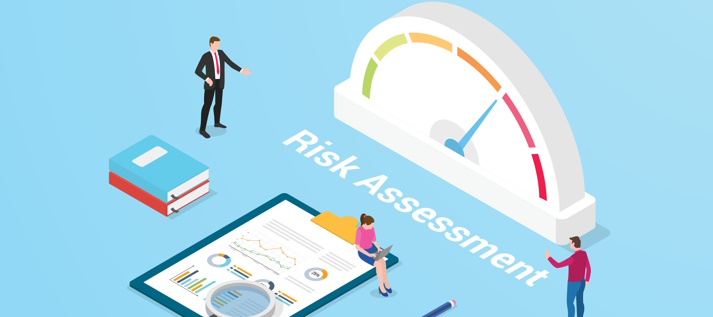When they think about investing in commercial real estate, many people assume such an investment means purchasing a commercial property directly; say, a retail building or an apartment complex. But there are other ways investors can benefit from the consistently strong returns that commercial property has historically delivered – particularly multifamily property. This post will discuss several ways to invest in commercial real estate.
First, though, let us briefly make the case that if you decide commercial real estate could be a viable addition to your investment portfolio, you should consider multifamily investing.
Why multifamily is a great way to invest in commercial real estate
A 2017 report published by CBRE, the world’s largest commercial real estate investment company, showed that in the 25 years from 1992 through 2016 multifamily residential properties returned the highest average annual returns of any type of commercial real estate investment. In fact, in that quarter-century period, multifamily investors enjoyed an average yearly return of nearly 10% on their investments. Not bad!
In fact, if you invest in commercial real estate the right way (which we will describe below) you have the potential to enjoy returns this high or even higher, without many of the common risks or headaches that come with operating a property directly yourself.
Now let’s discuss some of your options for investing in commercial real estate.
3 ways you can invest in commercial real estate
1. Buy a commercial property directly yourself
This is what most investors think of immediately when they consider the concept of investing in commercial real estate: buying a piece of property and then either managing the day-to-day operations of the property themselves or outsourcing those responsibilities to a property management firm.
Investing this way can certainly deliver strong returns, if you know what are doing, but it also carries several types of risk you might not be comfortable with. Here are just two examples:
You are not as diversified as you might think
Many investors correctly recognize that they can diversify their real estate investment by purchasing a multifamily building as opposed to a single-family residence – because they have multiple sources of income, and the loss of one tenant in a multifamily property won’t take the investor’s revenue down to nothing, as it will with a single-family home.
But owning a single piece of commercial property (even if that property can support several rent-paying tenants) is still not as diversified as many investors might believe. Such an investment still exposes an investor to the ongoing risks of having to address costly problems with that one piece of property.
Purchasing and managing a commercial property requires a lot of expertise
Another issue with investing in commercial real estate directly is that it is far more complicated than many new investors expect. Calculating a property’s revenue potential and estimating its present and long-term value are difficult tasks and require knowledge and expertise. A mistake here could lead an inexperienced investor to pay too much for a property or even to purchase a property that is simply not a good investment.
Moreover, managing a commercial property (even if you plan to outsource the daily operations to a property management company) will also entail a lot of decisions that could either add to or detract from the property’s value and revenue potential. In short, there is a lot of potential for costly errors when you own a commercial real estate directly.
2. Partner with other investors to buy a commercial property (or several)
Many investors who want to own commercial property directly do so with a team, creating a business in which several partners work together to buy and manage their commercial real estate investment.
In many ways, this strategy can help mitigate against the risks to any single investor in the partnership. For example, by spreading the investment capital among several partners, each investor has personally invested in the property and therefore less to lose. Also, because they will have more total capital to invest, these partners might be able to purchase more than one commercial property – perhaps even in different geographical regions, thereby also reducing their risk of exposure to just one local market.
However, all of the investors in a partnership that invests in commercial real estate still face the challenges of directly investing in a real estate property. They will carry the risk of exposure to downturns in whichever local market their property is situated, for example, and the risk of mistakes in management (or poor decisions about the property) that might result from their lack of expertise in operating commercial real estate.
Another drawback that many investors might find with this approach to investing in commercial real estate (as with buying and maintaining a property yourself) is that it will be an active, not a passive, investment.
Contrary to a common misconception, investing directly in commercial real estate (or residential real estate, for that matter) is an active investment, even if you hire property managers to handle the day-to-day operational tasks. When your property manager comes to you with problems (and they will) you will still have to make the final decisions about what to do.
3. Buy into a fund that owns and operates commercial property
This, we believe, is the best option for investing in commercial real estate, for several reasons.
Why choosing the right fund is the smartest way to invest in commercial real estate
First, by investing in a commercial real estate fund, you are far more diversified in your investment than you would be even if you purchased several properties directly yourself. The right fund will invest in many properties.
Second, the right commercial real estate investment fund will be managed by a team of experts. These managers will bring the mission-critical knowledge and successful track record to every decision on every property in the fund, to help push revenues, property values (and your rate of return) higher.
Third, unlike buying and managing a commercial property yourself (or with a group of partners), investing in commercial real estate by purchasing equity in a commercial real estate fund is truly a passive investment. All you will need to do is place your investment capital into the fund, let the professionals who manage its portfolio of properties deal with the day-to-day management details, and check the mail periodically to read about your returns.
And if you’re wondering where to find the right fund for your commercial real estate investment, let us introduce you to the leading fund for Kansas City multifamily real estate.
This does not constitute an offer to purchase securities, and that any purchase may be made only through delivery and receipt of a confidential private placement memorandum from the issuer, pursuant to which any potential investor must complete and provide an investor questionnaire, subscription agreement and other things required by the issuer, and are subject to the issuer’s verification of accredited investor status and issuer’s acceptance of the subscription































